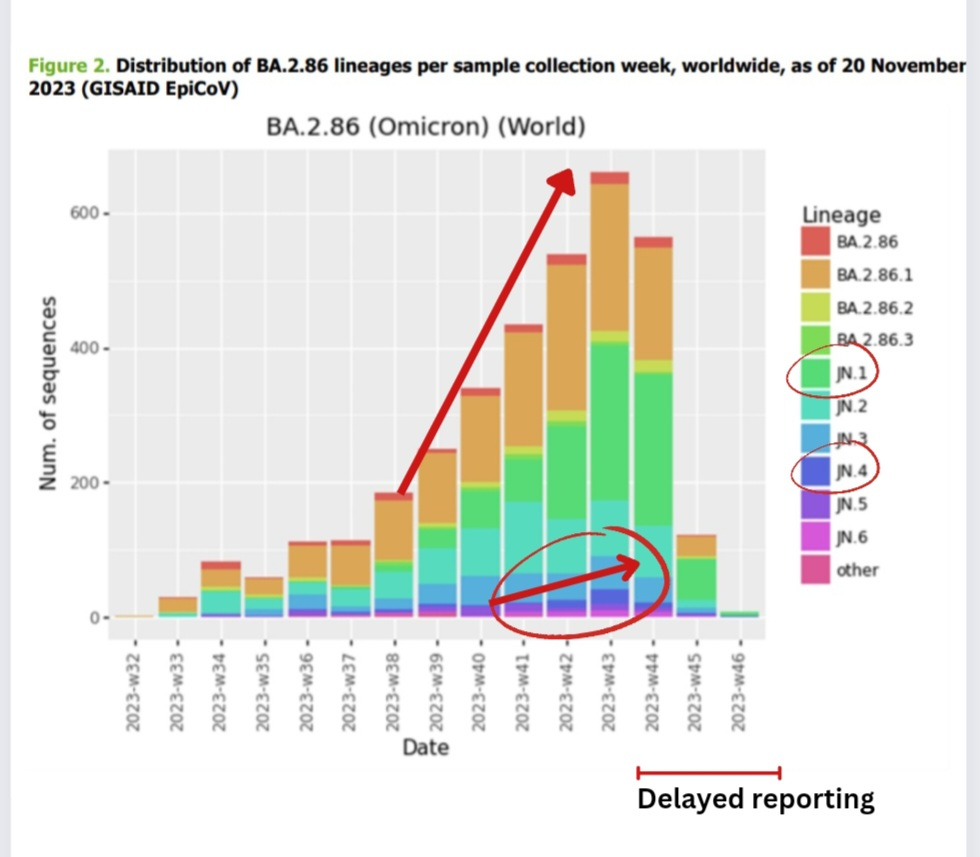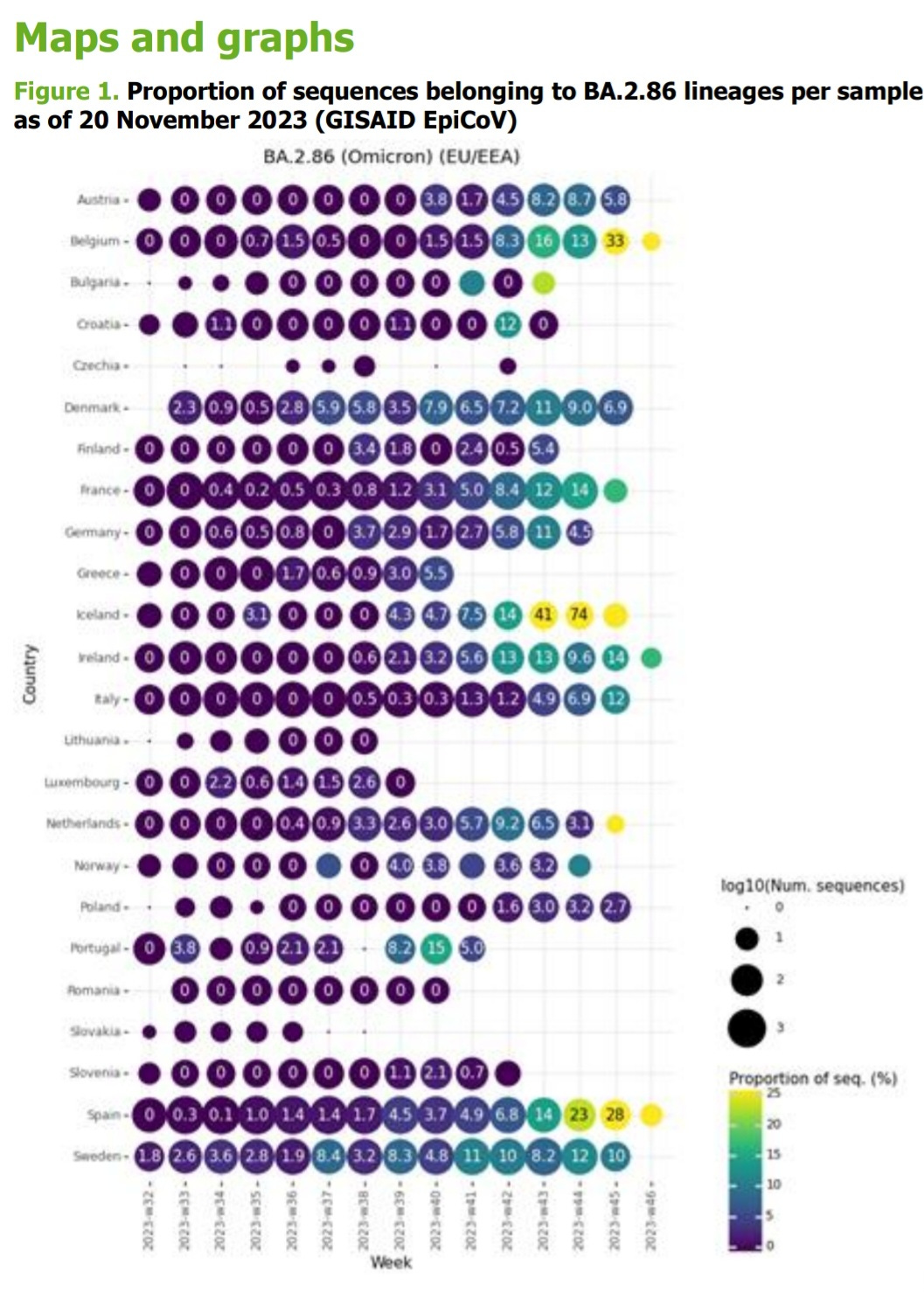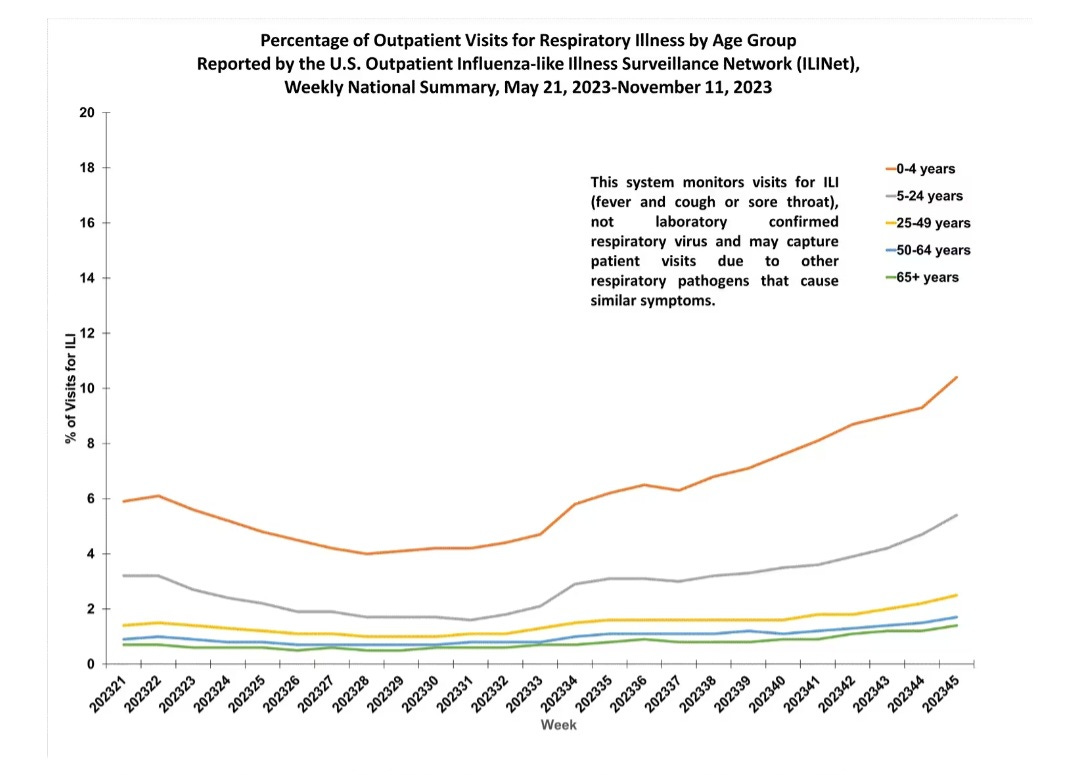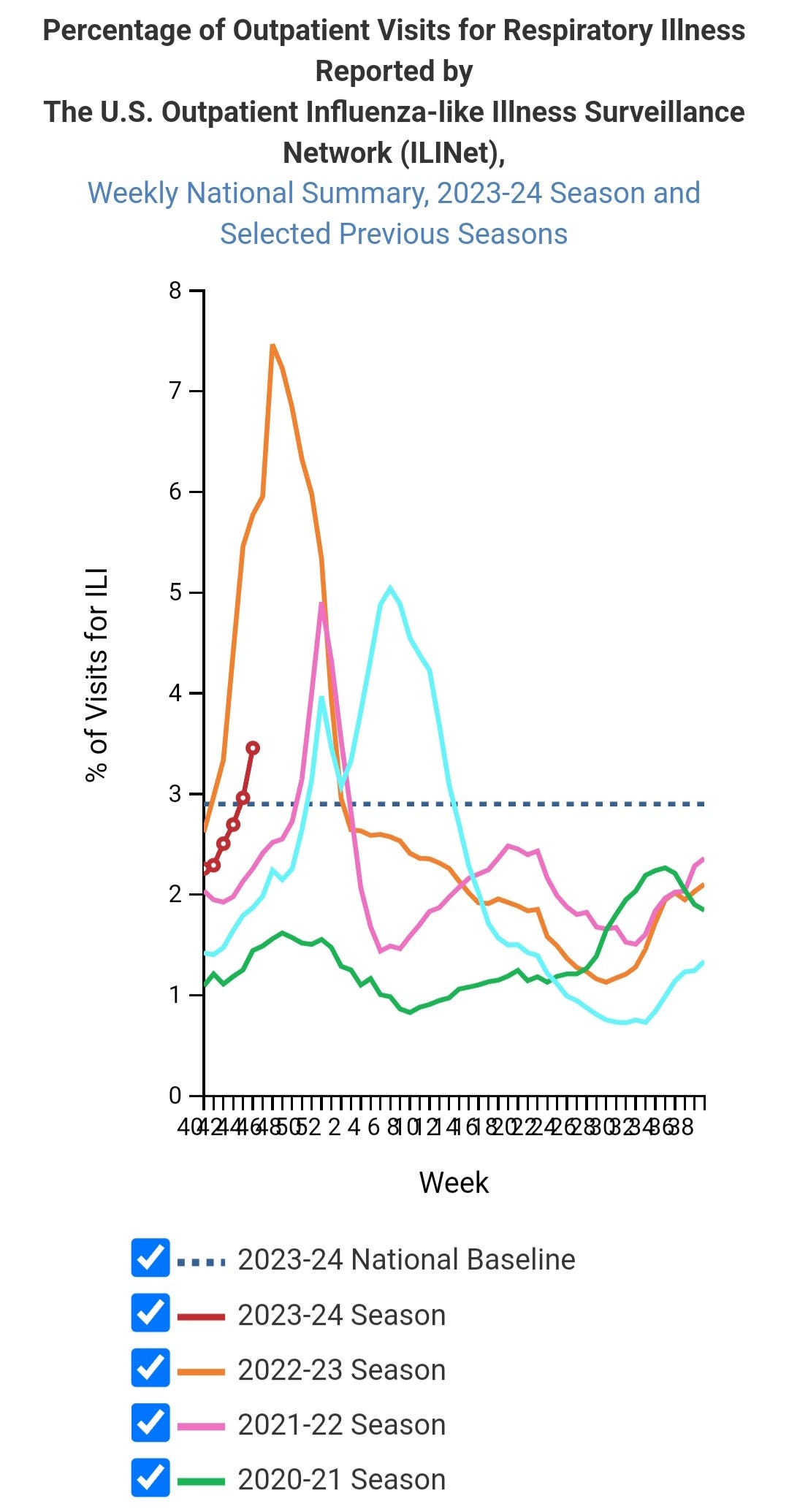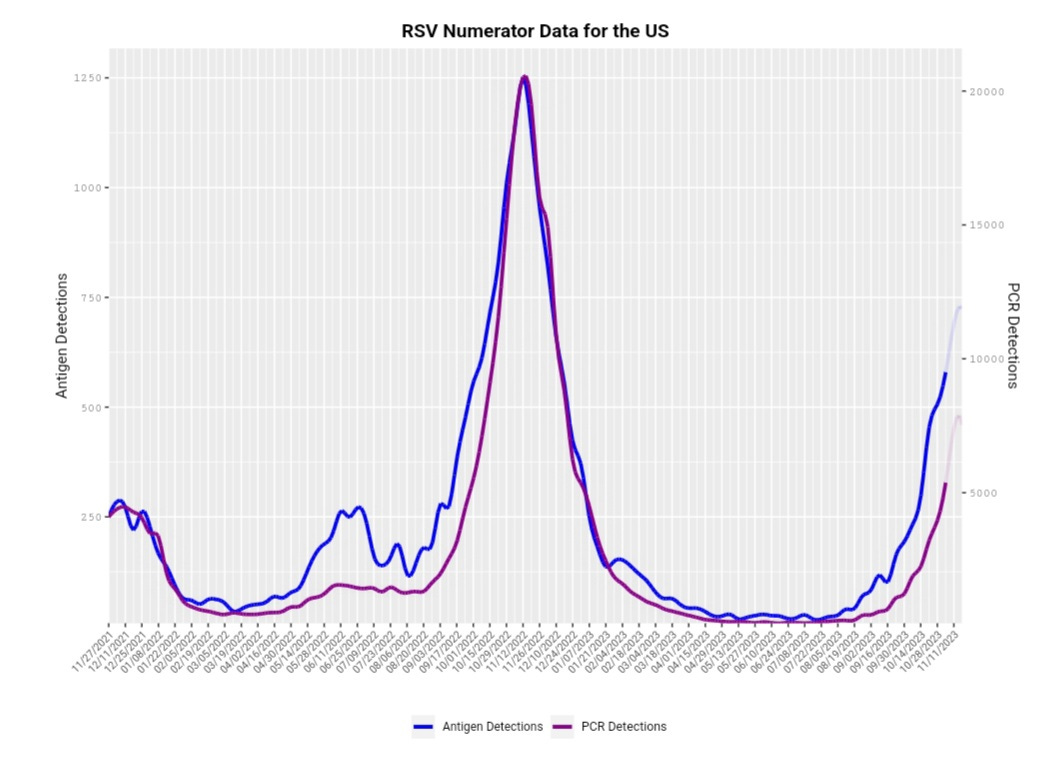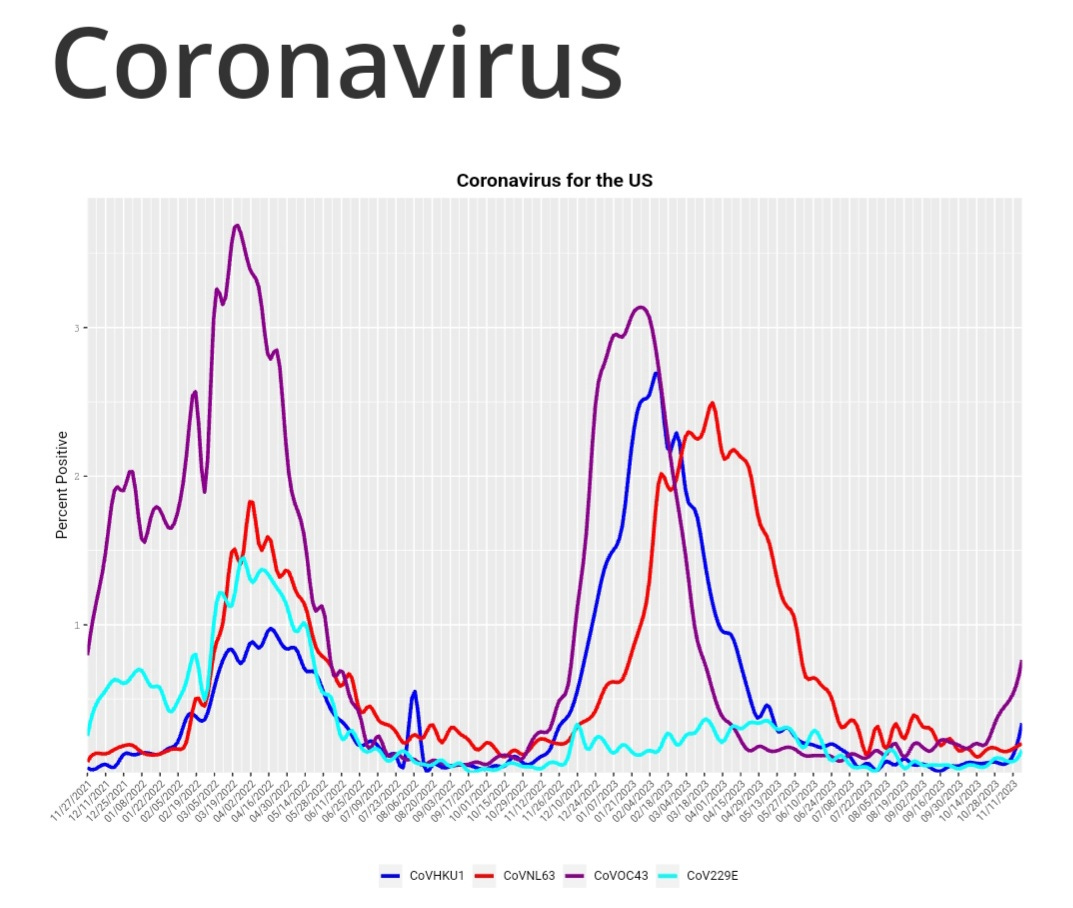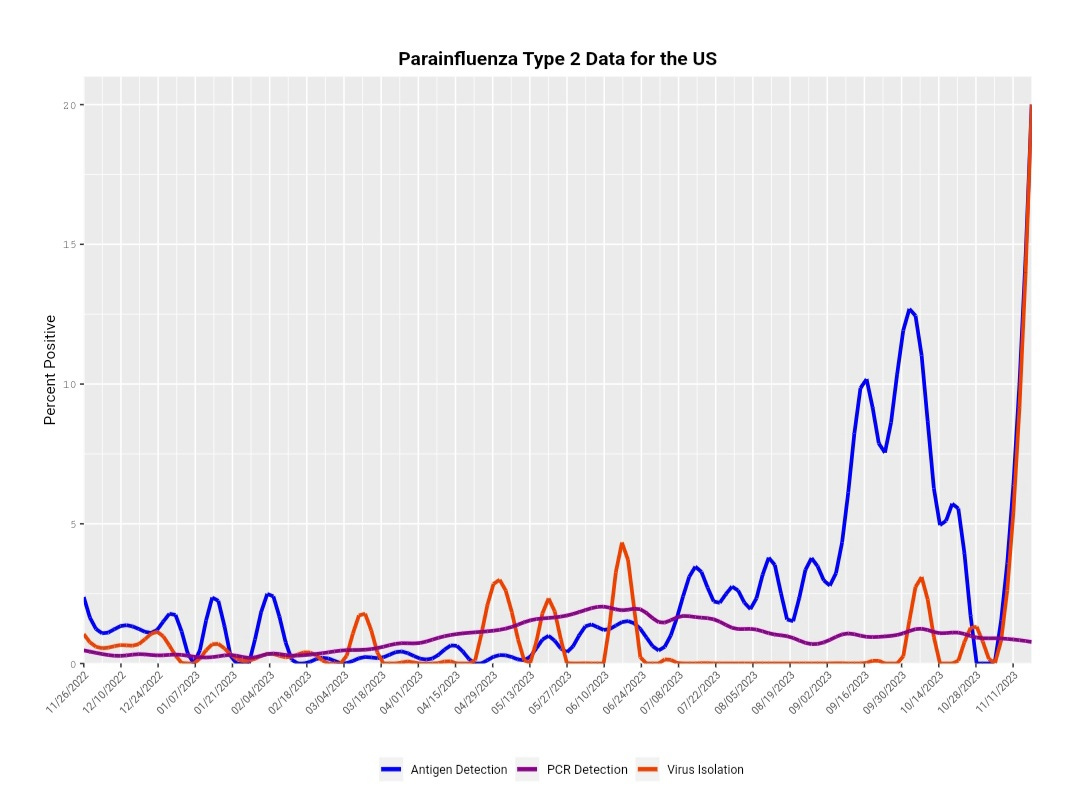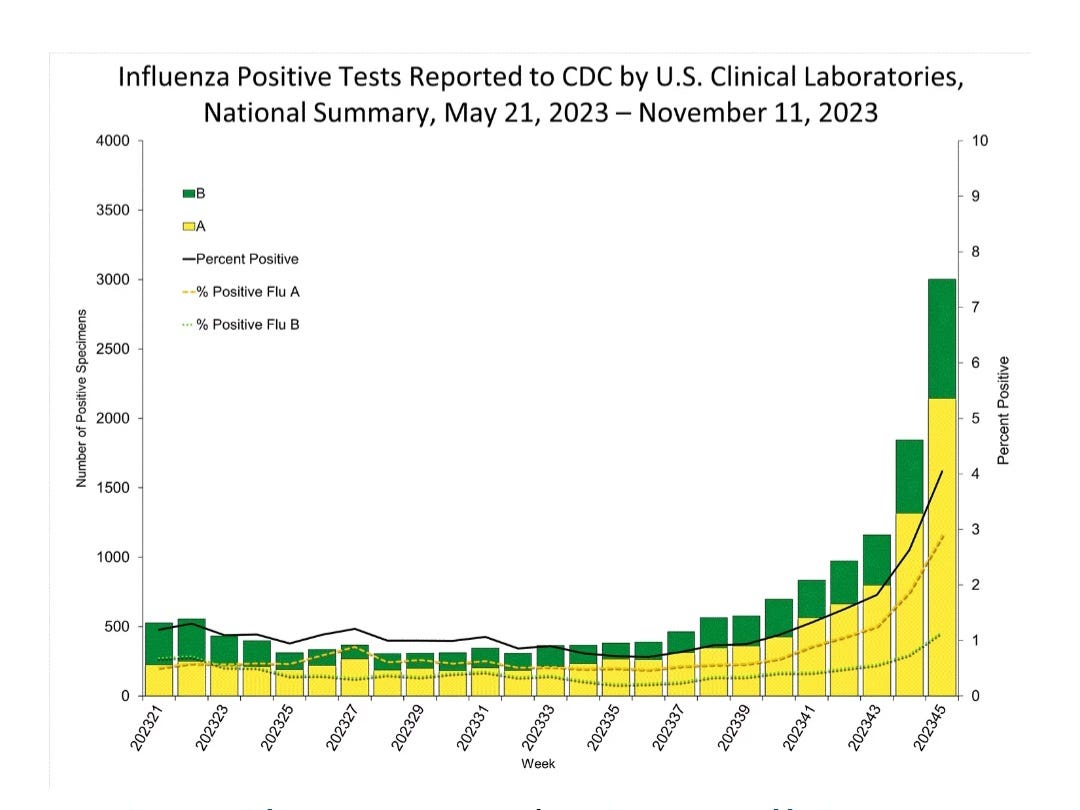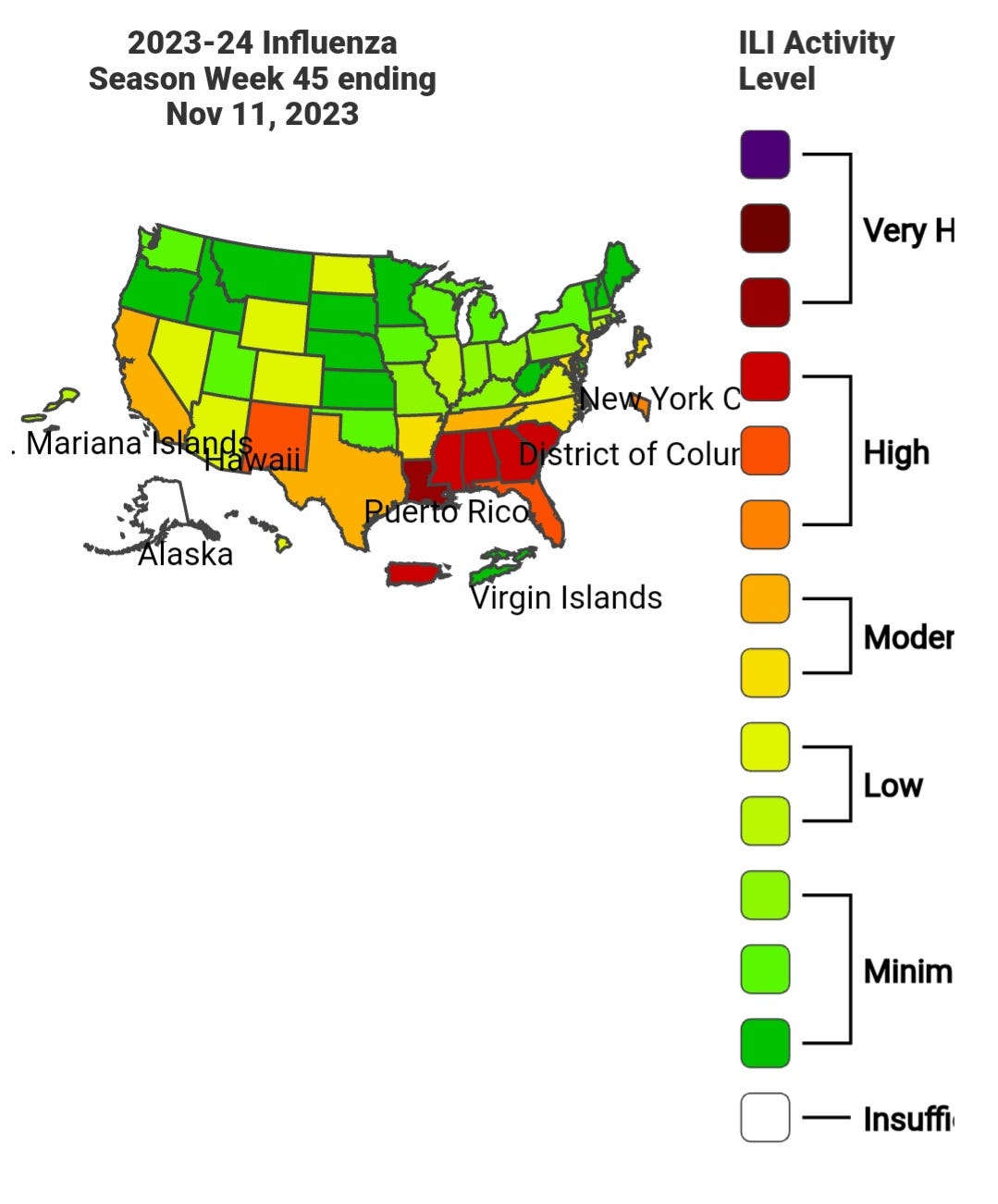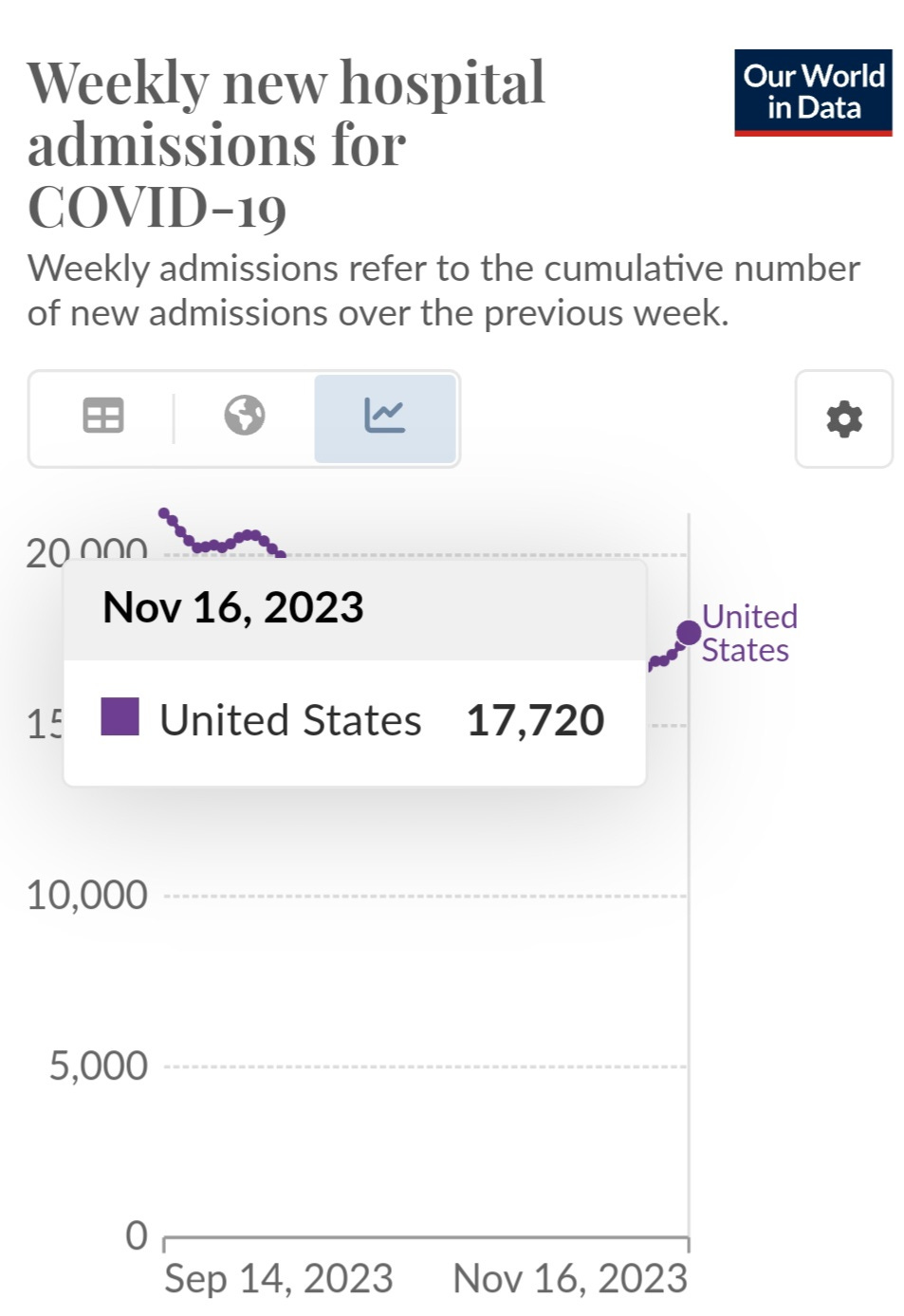COVID, Flu, RSV, and Norovirus Increasing as New Immune Escape COVID Variants Rapidly Spread
The ECDC and the W.H.O. Declare BA.2.86 (Pirola Variant) a Variant of Interest
As of Nov 24, 2023, the ECDC and the W.H.O. classified BA.2.86 a variant of interest. They are a late in raising the level and it should be raised another level to a variant of concern. They should give it a new name because it is so far removed from the original Omicron variant, that it is about the same evolutionary distance as the first Omicron was from the original Wuhan strain. The BA.2.86 sub-variants are displacing the existing variants at a fast pace. JN.1 (BA.2.86.1.1) and JN.4 (BA.2.86.1.4) are the variants that have the highest growth potential. JN.4 is just beginning an exponential growth curve. It will likely increase at an even faster pace than JN.1 once it gains momentum.
JN.1 can “outcompete both its precursor BA.2.86 and the prevailing variants HV.1 (XBB.1.5+L452R+F456L) and JD.1.1 (XBB.1.5+L455F+F456L+A475V) in terms of humoral immune evasion.”
If we look at the growth prior to the last three weeks it is more representative because of the delays in reporting. We can see that in many of the countries the prevalence is nearly doubling every week. The high level of immune escape with these variants will make most people more susceptible to infection.
Influenza in Europe
In the EU, the influenza test positivity increased from 1% to 2%. Although, influenza prevalence is not very high yet it is expected to continue to increase at an exponential rate. “Hospital admissions, ICU, and death indicators for influenza remain low.”
United States Respiratory Infections Are Increasing Due to Multiple Viruses, Including COVID-19
0-4 years old, currently the largest increase in respiratory infections, followed by 5 to 24 years.
Respiratory outpatient visits are increasing faster and earlier, just behind the increase last year.
Influenza, RSV, norovirus, the common cold corona viruses, and parainfluenza type 2 are all spreading at an exponential rate.
RSV
Along with COVID-19, RSV also significantly reduces lymphocyte count in children. Two viruses that weaken children’s immune systems.
"Children with RSV were found to have significantly lower lymphocyte counts."
Co-infections with RSV, Flu and COVID are often more severe.
A study published in Frontiers in Public Health looked at coinfections in people aged 65 years old and up. It concludes that coinfections can be associated with an increased rate of complications, longer treatment duration, a higher rate of intensive care unit (ICU) admission, and mortality compared to a single infection.
This study says, "RSV and SARS-COV-2 coinfection in children can be considered a serious problem" "Coinfection of RSV with SARS-CoV-2 may promote severe disease in children"
Norovirus
Coronavirus (common colds)
Parainfluenza type 2
Influenza
The southern U.S. is seeing the highest prevalence of influenza but we can expect the same in the north as the exponential growth is already underway.
Researchers discovered that contracting influenza A may heighten an individual's susceptibility to COVID-19 by elevating the levels of ACE2—the receptor facilitating the virus's entry into our cells—in the lungs. This not only increases the risk of acquiring COVID-19 but also amplifies the severity of the illness, as outlined by the authors.
An animal study, dated October 2021, revealed that co-infection with influenza and COVID-19 resulted in more severe and prolonged pneumonia in hamsters.
In a meta-analysis featured in PLoS One, researchers meticulously examined over 6,000 studies involving both hospitalized and non-hospitalized patients. The findings indicated that 19% of COVID-19 patients experienced co-infection with another virus at the time of their COVID-19 diagnosis, and 24% had superinfections (meaning another virus was detected sometime after their COVID-19 diagnosis). For both groups, the researchers observed that the likelihood of death increased by more than three times.
Hospitalizations Increasing
With much less testing within hospitals and much less reporting the fact that we see as much of an increase of hospitalized patients as we do across multiple countries is something to pay attention too.
Sweden has reporting delays that make the increase look like steps and the steps look bigger in the latest data dumps. Sweden has a high prevalence of BA.2.86.1 compared to other countries reporting so it is a concerning trend.
TACT’s Overview
As we enter the flu and respiratory virus season, it's crucial to recognize that the surge is not solely due to colder weather but is largely fueled by transmission between schools and homes. Contrary to common belief, the highest prevalence is currently in the southern U.S., not the north. This is attributed to the earlier opening of schools in the southern states, leading to a head start in the growth of these viruses. While the flu's growth curve is slower and longer than COVID, the exponential increase in prevalence is noticeable at this time of year.
Understanding the reproductive number (Ro) of these viruses provides valuable insights. Seasonal influenza typically has an Ro between 1.3 and 1.8, while the original SARS-CoV-2 had an Ro of ~2.79, the Delta variant ~5.08, and the earlier Omicron variants an Ro of 7.0 or greater. The BA.2.86 sub-variants have the potential to spread rapidly, emphasizing the need for proactive measures.
With the level of data decreasing it is increasingly hard to determine the Ro of the latest variants but the BA.2.86 sub-variants have all the ingredients to spread very fast through the population, weakening immune systems, causing more persistent infections, and aiding in the viruses rapid evolution.
Have people advocated for and voted in school board members that will put Clean Air for Kids as a priority?
Unfortunately, in many cases, school boards have not prioritized Clean Air for Kids. It's imperative that communities advocate for policies and systems to enhance air quality in schools. This initiative is not only about preventing immediate health issues but also fostering a conducive environment for learning, safeguarding future quality of life, and promoting longevity. Just as we take measures to avoid dirty water and practice safe behaviors, addressing the quality of the air we breathe is equally crucial. It's time to recognize the systemic nature of this problem and implement solutions for a healthier future.





